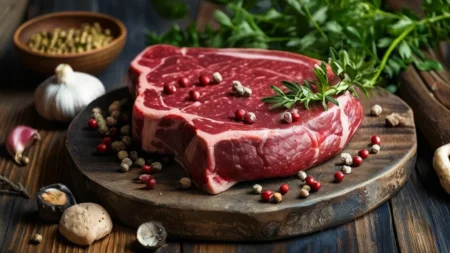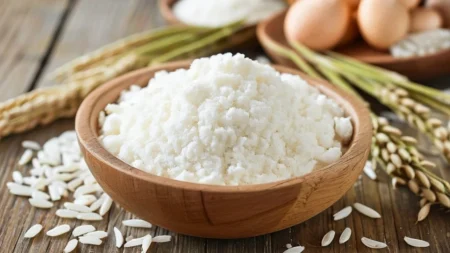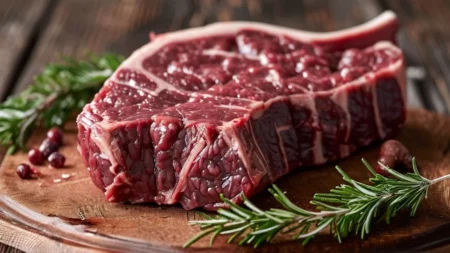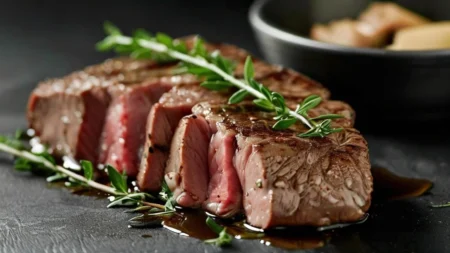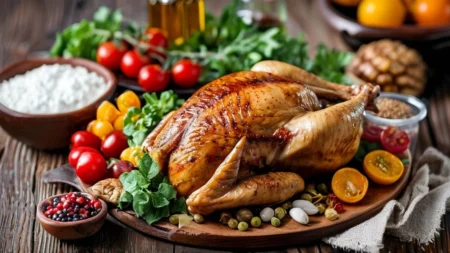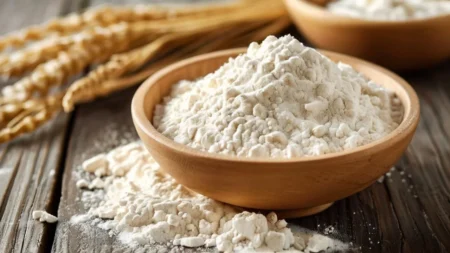Bulgur: Nutrition, Health Benefits, and Cooking Tips
Key Takeaways:
- Bulgur is a nutritious whole grain made from cracked wheat, rich in fiber, protein, and essential vitamins.
- It’s a versatile ingredient commonly used in Mediterranean and Middle Eastern cuisine, ideal for salads, soups, and pilafs.
- Bulgur is easy to cook and offers numerous health benefits, including improved digestion and heart health.
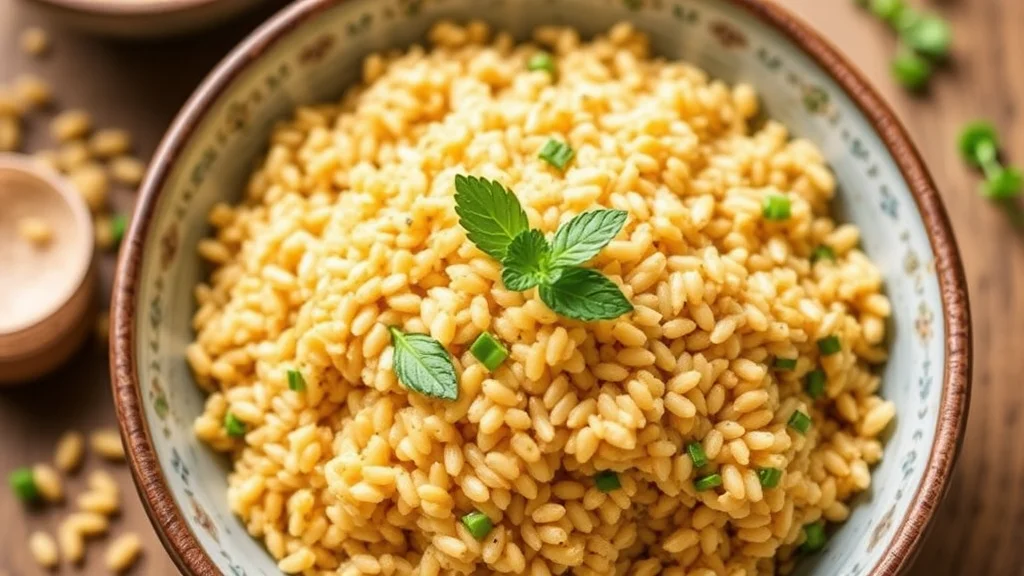
What is Bulgur?
Bulgur is a whole grain made from cracked wheat that has been partially cooked, making it quick and easy to prepare. It has a nutty flavor and chewy texture, making it a popular base for dishes like tabbouleh and pilaf. Because it’s minimally processed, bulgur retains most of the wheat’s nutrients, making it a highly nutritious option.
Nutritional Breakdown per 1 Cup (182 grams) of Cooked Bulgur
| Nutrient | Amount |
|---|---|
| Calories | 151 kcal |
| Protein | 5.6 grams |
| Fiber | 8.2 grams |
| Fat | 0.4 grams |
| Carbohydrates | 33.8 grams |
| Iron | 1.75 mg (10% DV) |
| Magnesium | 58 mg (15% DV) |
| Vitamin B6 | 0.26 mg (13% DV) |
Health Benefits of Bulgur
Bulgur is packed with nutrients and offers several health benefits that can enhance overall wellness:
1. High in Fiber
Bulgur is an excellent source of dietary fiber, which supports digestive health and helps prevent constipation. High-fiber foods like bulgur also help control blood sugar levels and support healthy cholesterol levels.
2. Rich in Plant-Based Protein
For those following a plant-based diet, bulgur is a good source of plant-based protein. While it doesn’t provide all essential amino acids like animal proteins, it can be combined with other foods, such as beans or lentils, to make a complete protein.
3. Supports Heart Health
The fiber and antioxidants found in bulgur are beneficial for heart health. Whole grains like bulgur are associated with a lower risk of heart disease due to their ability to reduce cholesterol levels and blood pressure.
4. Promotes Weight Management
Due to its high fiber content and low calories, bulgur can help with weight management by promoting feelings of fullness. Incorporating bulgur into your meals may help you eat less by keeping you satisfied longer.
How to Cook Bulgur
One of the major advantages of bulgur is its ease of preparation. It’s often pre-cooked during the manufacturing process, so it cooks quickly.
Steps for Cooking Bulgur
- Rinse the bulgur under cold water to remove any dust or debris.
- In a saucepan, combine 1 cup of bulgur with 1 ¾ cups of water or broth.
- Bring the mixture to a boil, then reduce the heat to low.
- Cover and simmer for 12-15 minutes, or until the water is absorbed and the bulgur is tender.
- Fluff with a fork and let it sit for a few minutes before serving.
Tip: If you’re using fine bulgur, you can simply soak it in hot water for 10-15 minutes instead of cooking it.
Bulgur in Culinary Traditions
Bulgur is a staple in many cuisines, particularly in the Mediterranean and Middle Eastern regions. Here’s how bulgur is used in different dishes:
1. Tabbouleh
Tabbouleh is a traditional Levantine salad made with finely chopped parsley, tomatoes, mint, onions, and soaked bulgur. The mixture is dressed with olive oil, lemon juice, and salt, making it a refreshing and nutritious dish.
2. Pilaf
Bulgur pilaf is a popular dish in Middle Eastern cuisine. Bulgur is cooked with vegetables, such as onions, garlic, and tomatoes, and seasoned with spices like cumin and paprika. It’s often served as a side dish or main course.
3. Kibbeh
Kibbeh is a dish that combines bulgur with ground meat, usually lamb or beef. The mixture is shaped into patties or balls and either baked or fried. Kibbeh is often enjoyed as a main dish or appetizer in Middle Eastern cuisine.
Types of Bulgur
Bulgur comes in different grind sizes, each suited for specific recipes:
1. Fine Bulgur
Fine bulgur is commonly used in salads like tabbouleh or as a base for dips. Its smaller grain size means it often doesn’t need to be cooked—just soaked in hot water for a few minutes.
2. Medium Bulgur
Medium bulgur is versatile and can be used in a variety of dishes like pilafs or soups. It’s a good middle ground between fine and coarse bulgur.
3. Coarse Bulgur
Coarse bulgur is used for more substantial dishes, such as stews or casseroles, where the grain needs to hold its shape during longer cooking times.
Bulgur vs. Other Grains
Bulgur is often compared to other whole grains like quinoa, couscous, and rice. Here’s how it stacks up nutritionally and in terms of use:
1. Bulgur vs. Quinoa
While both bulgur and quinoa are high in fiber, quinoa is a complete protein, containing all nine essential amino acids. However, bulgur is quicker to cook and has a lower calorie count per serving.
2. Bulgur vs. Couscous
Couscous is made from semolina, a type of processed wheat, and is not considered a whole grain. Bulgur, being a whole grain, offers more fiber and nutrients than couscous.
3. Bulgur vs. Rice
Brown rice is often a go-to for whole grain options, but bulgur contains more fiber and fewer calories per serving, making it a healthier choice for those looking to increase their fiber intake.
Conclusion
Bulgur is a nutritious and versatile grain that fits well into various dishes, offering numerous health benefits such as improved digestion, heart health, and weight management. Whether you’re making a traditional tabbouleh or trying a bulgur pilaf, this grain is a valuable addition to any diet. Easy to cook and rich in essential nutrients, bulgur can be a staple in your healthy eating plan.
FAQ
Q: Can bulgur be eaten raw?
A: Bulgur is partially cooked during processing, so fine bulgur can be soaked in hot water and eaten without further cooking. Coarse bulgur, however, should be fully cooked before consumption.
Q: Is bulgur gluten-free?
A: No, bulgur is made from wheat, so it contains gluten. It is not suitable for those with celiac disease or gluten intolerance.
Q: Can bulgur be frozen after cooking?
A: Yes, you can freeze cooked bulgur. Let it cool completely, then store it in an airtight container or freezer bag for up to 3 months. Thaw in the refrigerator overnight before reheating.
Q: How does bulgur compare to farro?
A: Both bulgur and farro are whole grains, but farro has a chewier texture and takes longer to cook. Nutritionally, they are similar, though farro has slightly more protein.





